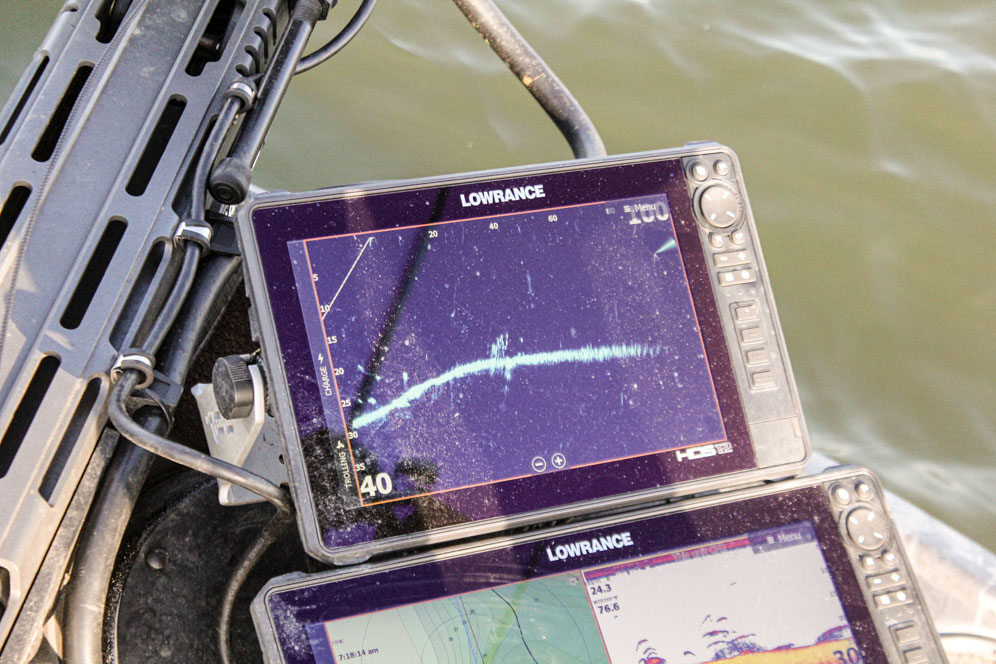
As a fisheries biologist, I usually think about technological fishing advances from the perspective of whether they could increase the chances of overharvest. Technology is rapidly changing in all types of fisheries, both recreational (freshwater and saltwater) and commercial. This technology has great potential for improving various aspects of the sport, like individual angler catch rates, potential to catch trophy fish and for anglers to learn more about fish behavior and seasonal movements. Technology is not a bad thing, but it is a factor that needs to be considered in fisheries management.
In fisheries science, we have a term called “catchability” which applies to specific fishing equipment. This is defined as the fraction of a fish population captured per unit of fishing effort. In commercial fisheries, this could be the fraction of a fish population caught per trawl or per gill net set. In recreational fisheries, it could be the number of fish caught per angling day. Improvements in technology can increase catchability, such that more fish are caught per unit of fishing effort.
Most bass fisheries are well managed with high amounts of voluntary release of the fish, and overharvest is seldom a primary management concern relative to other factors like habitat quality and juvenile bass recruitment to adulthood. This means restricting technology to protect bass from overharvest is likely not a primary concern for most bass fisheries, because most anglers release their fish, and the survival from catch and release is typically high (over 90%).
That said, the advances in sonar technology have the potential to influence fisheries and the likelihood of overharvest, particularly for species that are harvested by anglers. The ability to visually find and target fish in open water is new for us, and it has the potential to increase fishing mortality and the potential for overfishing. Regulations that restrict this technology could be considered as a conservation measure if the science suggests that overharvest is more likely to result from this new technology. Studies are underway now to evaluate this, in many locations.
Such restrictions have precedent in fisheries management, as regulations often cover fishing gear restrictions to prevent the potential for overharvest or waste of fish due to catch-and-release mortality. For example, circle hooks are required in many reef fish fisheries to minimize catch-and-release mortality. Barbless hooks are required in some trout streams for the same reason. Similarly, restrictions on types of commercial fishing gear are common, either to reduce catch or minimize the chance of overharvest. In the future and depending on what upcoming science reveals, regulations on use of sonar technology could be considered if the likelihood of overharvest turns out to be high.
However, my sense based on the fishing mortality rates we see for bass fisheries is that forward-facing sonar is not currently a major concern for causing overharvest in bass fisheries. If that is the case, then the use of this technology probably does not have a biological management need, at least given the information we have now.
A lot of the recent discussion about forward-facing sonar focuses on whether potential limitations on that technology improves the level of competitiveness and the viewer experience for professional bass fishing. Of course, as a scientist, that is not a decision I can weigh in on, but tournament organizations do have gear restrictions currently in place — such as no trolling, no live bait, no umbrella rigged baits, etc., which are presumably to increase the competitive aspect of tournaments.
However, from a science perspective, this technology is not currently a clear management challenge for bass populations, and with the information we have now I see no reason to regulate this technology from a bass fishery management perspective. Thus, decisions about the use of this and other technologies for tournament angling should include input from the competitors, the fans and ultimately the tournament organization leaders. Although this is probably not a bass population management issue, it is an important consideration for fans and participants of competitive bass fishing.




